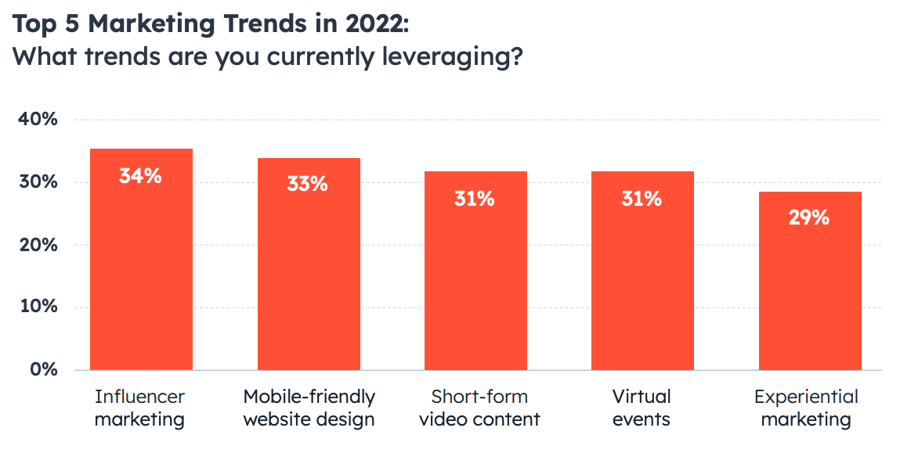- i. Account based Marketing
- ii. Account-Based Marketing and Inbound Marketing
- iii. Account-Based Marketing Strategy
- a. Establish coherence between your sales and marketing departments:
- b. Perform market research to identify the characteristics of account personas:
- c. Create account plans
- d. Attract contacts associated with target accounts
- e. Get the buying committee involved
- iv. Benefits of ABM
- v. Conclusion
“Strategic ABM only makes sense in accounts with large budgets because it is so resource-intensive, with marketers looking after between three and five accounts, or sometimes a single, large account.” Bev Burgess,
A growing number of B2B marketers are embracing account-based marketing (ABM) as part of their overall marketing efforts. ABM perfectly complements the traditional, short-term marketing goal of generating leads with efforts aimed at driving long-term revenue growth. This article offers Six practical recommendations for businesses seeking to maximize the value of their Account based Marketing and achieve their business objectives effectively. To get help boosting your return on investment (ROI), consider partnering with Whizzystack. We’ve helped hundreds of businesses, and we’d love to add you to the list! To get started with us, just call us at +91-95-6064-1397 or contact us online today!Account based Marketing
Account-Based Marketing (ABM) is a targeted marketing strategy that focuses on engaging a specific set of high-value accounts or target accounts.
Rather than casting a wide net with your marketing efforts, ABM requires you to identify a set of accounts that are most likely to buy your product or service, and then focus your marketing efforts specifically on those accounts. This is typically done by creating personalized content, tailored to the needs and interests of the targeted accounts, and delivering it through targeted channels, such as email, social media, or direct mail. ABM is particularly useful for B2B (business-to-business) companies, where the sales process tends to be longer and more complex, and where a small number of high-value accounts can have a significant impact on revenue. By focusing on these accounts, ABM can help you build stronger relationships with key decision-makers, improve conversion rates, and drive revenue growth.


Courtesy: Marketingessentials.com
Account-Based Marketing and Inbound Marketing

- Firstly, inbound marketing can help you establish a strong foundation for your ABM strategy by allowing you to identify and attract high-value accounts that are a good fit for your business.
- Secondly, the highly-targeted and efficient resource allocation that ABM provides can help you focus your marketing efforts on the accounts that are most likely to generate revenue, maximizing your return on investment.
- Finally, combining ABM and inbound marketing can enable you to create content that serves both strategies, helping you to attract a broader range of prospects while also providing personalized content for your target accounts.
- Overall, implementing both strategies can help you achieve your marketing goals more effectively and efficiently, while driving revenue growth and building strong relationships with your customers.
Account-Based Marketing Strategy

Establish coherence between your sales and marketing departments:
Effective implementation of account-based marketing relies heavily on achieving alignment between marketing and sales. It is essential to provide a seamless customer experience from lead acquisition to final sale through a personalized buying process. To improve synergy between marketing and sales, it is crucial for both departments to prioritize clear communication and find a common ground. The marketing team should focus on generating leads that the sales team can successfully convert into sales. If you are new to ABM, it is recommended to start with a small task force consisting of one marketer and one salesperson working in tandem to identify and sell to target accounts. As your efforts scale up, it is advisable to have your marketer support additional salespeople. Typically, one marketer can align with up to 10 salespeople, and each salesperson can manage up to 10 accounts.Perform market research to identify the characteristics of account personas
When marketing and sales departments are aligned in their approach, they can collaborate to ensure that their company targets the right account personas. Typically, this process starts with conducting research to determine which accounts to focus on. To identify customer personas for an account-based marketing strategy, marketers should take into consideration various factors, such as the ideal customer’s mission, vision, and business objectives, engagement of high-value accounts with the company’s inbound approach, stage of business maturity, company size, and growth trajectory, revenue model, spending patterns, and the tools and platforms used by the ideal customer. While there are multiple methods to identify critical accounts, the most crucial aspect is to ensure that marketing and sales are in agreement regarding which accounts to target.Create account plans
Once the target accounts are identified, the next step is to create account plans. This involves collaborative efforts between the marketing and sales teams to identify potential leads that need to be attracted to reach the target accounts and to determine what content should be produced to engage with the audience. When developing an account plan for an account-based marketing strategy, it is important to follow these best practices:- Each account plan should be customized to meet the specific needs of that account, although there may be similarities across account plans for different customers.
- The account plan should provide answers to two essential questions:
- Who are the key decision-makers involved in the buying process for this sale (e.g., influencers, blockers, Legal, end-users)?
- What type of content is necessary for each member of this buying committee?
Attract contacts associated with target accounts:
To attract contacts related to your target accounts, it is ideal to leverage the Inbound methodology. However, if additional contacts are needed, the subsequent step is to identify the places where your ideal contacts are searching for solutions that align with your offerings, and ensure that your company is visible and represented in these spaces. Some of the platforms where you can engage with potential contacts include events, industry publications such as blogs and newsletters, and targeted ad placements. Although there are multiple channels available to enhance your company’s visibility, it is crucial to prioritize those that are most relevant to your target accounts and contacts.Get the buying committee involved
It’s essential to engage all the involved individuals who will influence the buying decision as you establish relationships with key contacts. Even though sales typically takes charge of this stage, marketing should be prepared to provide relevant materials to support the messaging. To assess the effectiveness of an ABM strategy, the marketing and sales teams can leverage the following metrics:- Identifying the buyers linked to the target accounts and monitoring their interactions.
- Tracking deal-related data points such as creation date, velocity, and close rate to assess the deal’s health.
- Revenue generated from the targeted accounts.
Benefits of ABM

- Higher ROI: ABM can deliver higher returns on investment compared to other marketing strategies because it focuses on high-value accounts and personalized outreach, resulting in more meaningful engagements that lead to revenue growth.
- Better alignment between marketing and sales: ABM requires collaboration between marketing and sales teams, which creates a shared understanding of the target accounts and their needs, resulting in more effective campaigns and higher conversion rates.
- Improved customer experience: ABM focuses on delivering personalized content and tailored experiences for target accounts, which leads to higher engagement and a better customer experience.
- Increased customer lifetime value: ABM strategies enable companies to build long-term relationships with key accounts, resulting in higher customer lifetime value and increased revenue over time.
- More efficient use of resources: By targeting high-value accounts, ABM allows companies to focus their resources on the accounts that matter most, resulting in a more efficient use of time and money.
Conclusion

In conclusion, Account-Based Marketing (ABM) is a strategic approach that can help companies target high-value accounts and drive revenue growth. By aligning marketing and sales teams and creating personalized campaigns for target accounts, companies can improve conversion rates, customer experiences, and ROI. The key to success with ABM is to prioritize the needs of the target accounts, create tailored plans and messaging, and measure results to continually improve the strategy. With the right approach, ABM can be a powerful tool for companies looking to attract and retain high-value customers.
We don’t want to tell you about the work we do, we want to SHOW you.
WE’VE BUILT OVER
400
WEBSITES
in a variety of industries.
Drive a higher website ROI with Whizzystack’s expert digital marketing specialists
With a team like Whizzystack at your side, you can develop and maintain a showstopping website that earns a high ROI and drives revenue to your brand. We’ve generated over $3 million for our clients, and we’re eager to add your future successes to that number too!
With over 10 years of experience in the digital marketing industry, we have what it takes to propel your ROI to new heights and maximize your ability to manage your marketing budget. Just call 9560641297 or contact us online to get started with us today!









